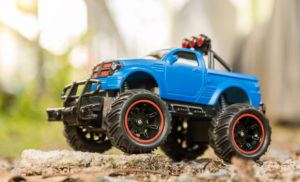How to Start Smart Savings Habits With Your Grade Schooler

When my son was about 6, he asked me if we could go out for pizza at his favorite restaurant. We had already been out to dinner that week, so I said to him, “I don’t really have the money to take you out to dinner, we already went out this week.” His response? “Can’t you just go get more money at the ATM?” It was clear he really hadn’t grasped the value of a dollar.
Six might seem young to start teaching children about money, but that early elementary school age, when children begin developing other good habits (such as brushing teeth and completing homework on time), is also a great time to promote good financial habits. Now, kids usually don’t have too much money when they are younger — maybe a gift from a relative or some money from the tooth fairy stashed in a jar on their dresser — but that is exactly the time to help them learn the value of a dollar and not to be impulsive with their finances.
After my son’s ATM comment, we opened a “bank”: a large, orange wooden tower that was taller than him at the time and focused on putting his savings into it. When he completed chores and got paid for them, it went in the bank. When I had change or an extra dollar bill, it went in the bank.
At first, you could hear the coins fall all the way to the bottom and my son was quite dismayed and impatient. I told him to wait, that when it was full we would open it. As time passed, my son began to change his outlook. His comments were more about what we’d do with the money when the tower was full and how far we had come with our savings, not how far we needed to go.
Finally, after months of dropping in our coins, months of chores, and lost teeth, we finally filled the bank. I told him, because of his commitment, that I would share the money I had contributed with him. But, before we opened it, we needed to have a talk.
We discussed how hard it was at first to save, and not just spend the money we had put in the bank, but acknowledged that through time it became easier because we had a goal: to fill the orange tower. To save.
Next, I told him it was time to think about all the things he wanted to spend his money on as he was saving, half of which he told me he couldn’t even remember. There was one toy though, that persevered through the entire process: an RC car. Not just any RC car, a monster truck. It was $40, he told me.
We unscrewed the bottom of the tower, and all the change and dollar bills poured out. We gathered them up in plastic bags and brought them to the nearest coin counting machine to determine just how much we had saved.
After the last coin clinked down through the machine, we determined we had $76.27 worth of change. Quite impressed with our efforts, my son now asked about the dollar bills. Our final tally was $34.
He said, “Mom! I have plenty of money to buy my truck!, I could buy two!” Ok, I thought to myself, a lesson not quite done yet. We had worked on savings, yes, but now it was time to learn about spending smart and sharing.
I asked him to split his money up into three piles. One that would go back into savings, and since our orange tower was now disassembled, that would be a Smart Savers account at Service Credit Union. One that could be used toward his monster truck, and one to share.
The piles weren’t quite equal, and I said that was OK, good financial habits take work, and what mattered was we were moving in the right direction. Forty dollars to spend on the monster truck, $40 to tuck away into savings, and $20.27 to share.
We headed to the toy store and my son picked out the blue monster truck. He was pretty psyched that he was finally getting it, and told me it had a lot more value because he had to earn his own money to get it.
On the way home, we stopped and shared some pizza. It was delicious.
